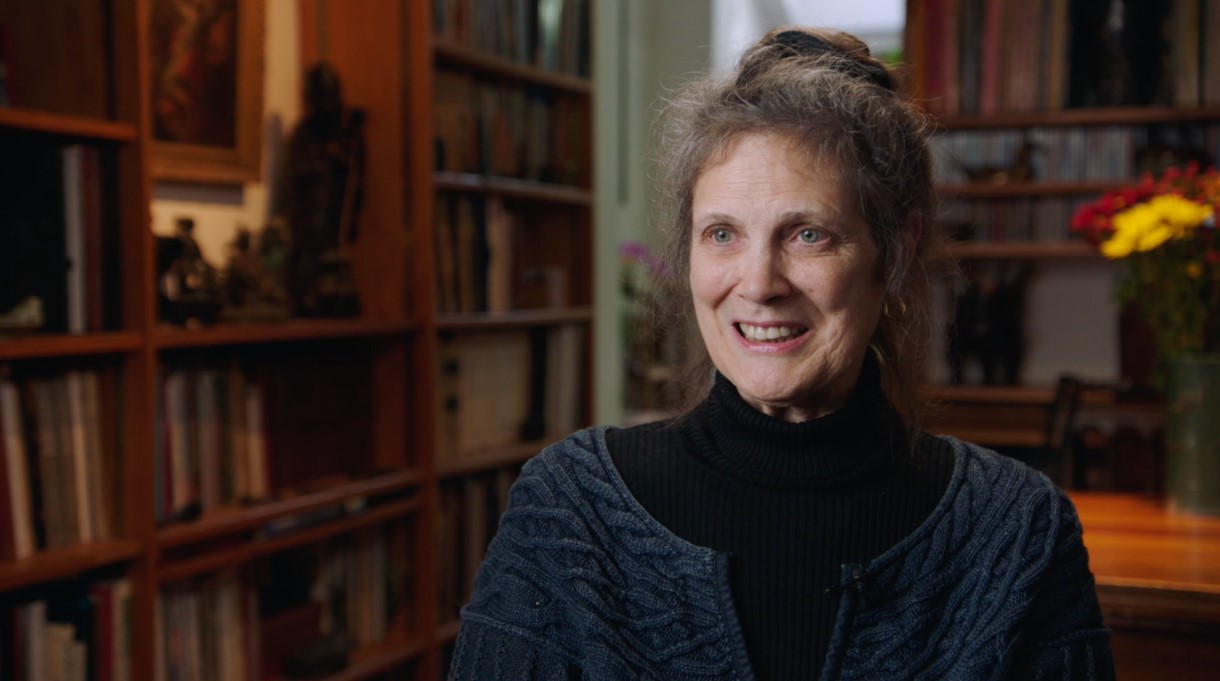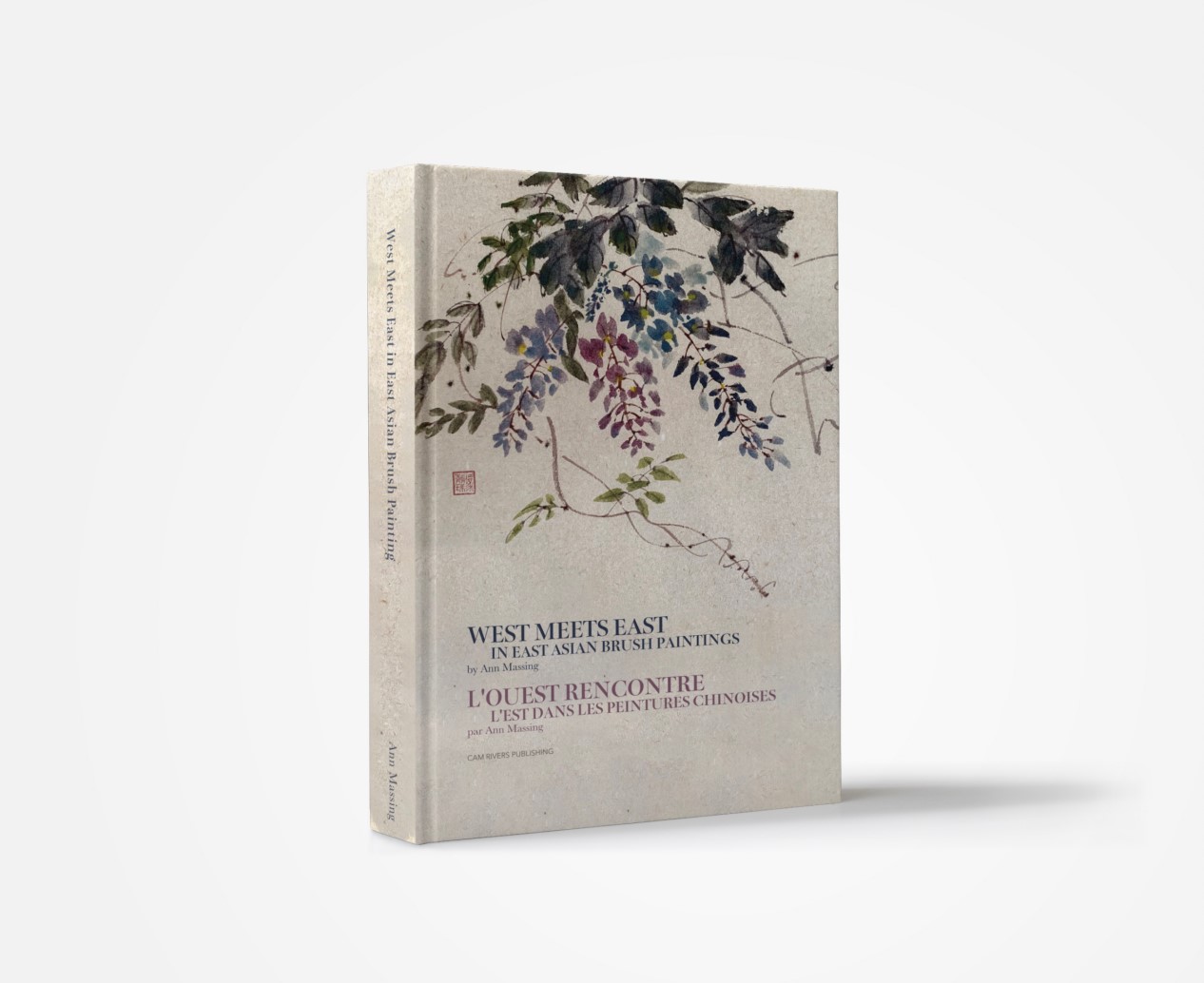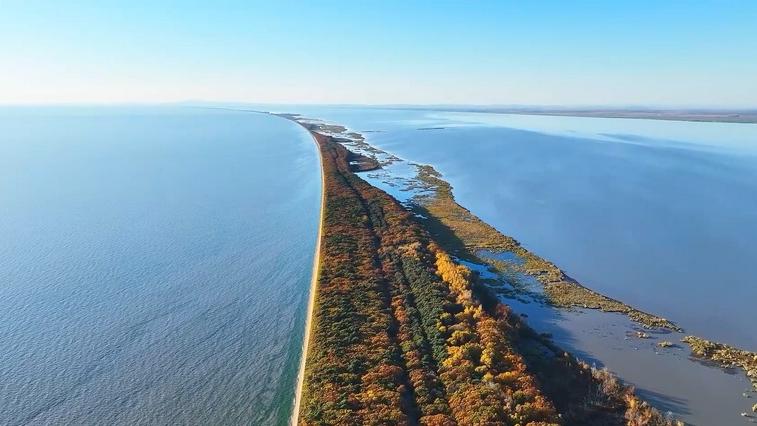Ann Massing: Bridging cultures through the fusion of Eastern and Western art
In the West, many individuals express their appreciation for traditional Chinese art in their own unique ways. Ann Massing, a renowned art conservator and East Asian ink and watercolor painter, has dedicated over 40 years to art restoration. Previously, she worked as a painting conservator at the Hamilton Kerr Institute at the University of Cambridge, where she also taught restoration courses. Her exceptional skills have enabled her to participate in several significant restoration projects at prominent sites, including the National Trust houses, public museums, and Buckingham Palace. Since her first visit to China in the 1980s, Massing has developed a deep interest in traditional Chinese scholar painting and has begun to explore Chinese brush techniques. Under the guidance of Peter Cavaciuti, a British-Italian artist and disciple of the renowned Chinese art master Xu Beihong, she dedicated herself to the study of Chinese ink painting and forging her own unique artistic expression. Through her published works, such as "A Journey Eastwards: Reflections on Chinese Ink and Watercolour Paintings" and "West Meets East in East: Asian Brush Paintings", Massing vividly illustrates the profound impact of cross-cultural artistic exchange.
In a recent exclusive interview with People's Daily Online, Massing shared her unique journey of merging Western and Eastern artistic traditions, as well as her recent visit to China. She offered vivid insights on the country's rapid transformation, and believes that the fusion of Eastern and Western artistic traditions not only enriches individual creativity, but also contributes significantly to global cultural exchange. She stresses that cross-cultural artistic dialogue fosters innovation and enhances mutual understanding, playing a vital role in promoting harmony across diverse communities worldwide.

Ann Massing (Photo/Howard Mills)
Exploring Eastern painting and cross-cultural art exchange
People's Daily Online: What were your impressions of the changes you observed during your recent visit to China?
Ann Massing: We went to China recently and had such a wonderful time. We saw so much that I'm still digesting it. It's changed so much. We visited Beijing, Suzhou, Hangzhou, Xi'an, and Shanxi. We were able to visit museums, which was a great experience. I was delighted to see the exhibition of landscape painting in the Forbidden City. We also visited the Terracotta Warriors site in Shaanxi, which was very impressive.
When we went to Suzhou, both my husband and I gave a talk at a foreign language school. We discussed the preservation and transmission of art from a cross-cultural perspective and shared our insights on intercultural communication, with the hope of advancing human civilization through art in the future. We were also given a tour of the school and met many of the students. Afterwards, we were able to speak to some of them. What we really hope is to deepen our mutual understanding of culture and art. One of them had been to Cambridge. She'd actually seen my painting exhibition in the Chapel of King's College in 2018. That exhibition, titled "Reflections on Chinese Ink Painting," featured 24 of my Chinese ink paintings and prints and was held during the Fifth Cambridge Xu Zhimo Poetry and Arts Festival. These works are now included in my eponymous art collection.
People's Daily Online: How did you first enter the world of Eastern painting, and how did you deepen your understanding of it?
Ann Massing: I don't think I really knew how to look at East Asian paintings at first. It's taken me a long time to train my eye and to understand how to look at them. I began with an evening class in painting, learning techniques like plum, bamboo, chrysanthemum, and orchids – the four friends. Just learning the techniques and learning how to use Chinese brushes was quite a challenge.
Only gradually did I begin to learn more about the meaning behind the paintings and what they represented. When we look at Chinese art with a Western eye, I think very often it tends to look very similar. Once your eye is more trained, you begin to see personality in the paintings, the painter behind and their personality.
People's Daily Online: How do you think Westerners should learn traditional Chinese painting?
Ann Massing: Just be patient. The wonderful thing about Chinese painting is even if you don't consider yourself artistic, so to say, you can still do great work and it's very meaningful because your personality comes through due to the spontaneity of the materials. Even if you don't have a lot of training behind you, you can do something very zen or very spontaneous that can be very satisfying to you and to others as well.
And then as you move along with your skills, then of course you can add different techniques or possibilities and build on what you are learning. So, one bit of advice would be to save the early works! This is what I was told when I was starting, it's nice to see the progress that you've made over a year or two or more. That can be very encouraging.
Building bridges between Eastern and Western art
People's Daily Online: How have you blended Eastern and Western painting styles to create your own unique artistic style?
Ann Massing: The fusion of the two happens naturally because my Western training is very much still part of me, but I've been doing East Asian painting for 30-plus years as well. The two just mix together. Now that I've retired I've got more time to devote to East Asian painting. That has been very inspiring for me to be able to learn more about it and to spend more time doing it.
How my artwork differs from traditional Chinese art depends on who looks at it. Westerners will often look at it and think, "Oh yes, that's Chinese painting." A Chinese person might look at it with a Chinese eye and think, "Not quite." They can see the fusion that happens in my work because of my background.
The natural world is my basis. It resonates with me and with traditional Chinese painting as well. That was the basis for their inspiration, so that is one link that is very similar.
I think to understand Chinese painting, one needs to understand the philosophical, cultural, and historical background. To understand my painting, I'm sure it would help too, but I think a lot of Western people look at my work and are intrigued! I may not have the background in Chinese art, but that is why I did the two publications – "A Journey Eastwards: Reflections on Chinese Ink and Watercolour Paintings" and "West Meets East in East: Asian Brush Paintings" that Cam Rivers has published for me. I want to try and explain to Western viewers what it is I'm doing and why I'm so passionate about it and let them understand why it's so meaningful to me.

The Cover of Ann's Book "West Meets East In East Asian Brush Paintings" (Photo/MUYE Studio)
People's Daily Online: What aspects of Chinese philosophy resonate with your artistic practice?
Ann Massing: I resonate closely with the Daoist philosophy. I don't have a religion myself, but I feel drawn to the Daoist way of thinking and their love of nature. That is something that is important to the Daoist way of thinking and to mine as well – the natural world and all that it encompasses, whether it be just a single flower or a mountainous landscape.
People's Daily Online: How do you see the role of art exchange between China and the West in fostering understanding between cultures?
Ann Massing: I think the arts can have a big influence on how people understand one another, definitely! All the arts in fact! While we were in China recently we were treated to some Peking opera. We saw also in the museums that there are lots of wonderful objects. I think that all arts, music, anything can be connecting factor between people because ultimately, we all produce these things. We are not so dissimilar in that. Creative flow occurs in all of us.
Just getting to know other painters has been wonderful! Very inspiring! Often we can't speak the same language, when we can it's a bonus! Even when we can't, through painting we can communicate. I think just one to one or small group to small group can make such a difference on a personal level. We can leave all the big picture of politics and whatever aside, have close, personal communication. This is very valuable.
Photos
Related Stories
- Beijing to held exhibition showcasing art, life in ancient Greece
- Artworks by Taiwan, Fujian artists on display in Taipei
- World theatrical artists, fans gather in China's Wuzhen for theater festival
- Jin Arts, a Chinese art design team, shines on international stage
- Art injects impetus into ancient castle in NW China's Qinghai
- Silk Road arts festival brings global artists to northwest China's Shaanxi
- Artist brings Journey to the West to life with vegetables
- People visit exhibition "China: A new generation of artists" in Paris, France
- Young Chinese artist wows netizens with exquisite artworks made from sugar syrup
- Relics from South China Sea make debut in Hainan
Copyright © 2024 People's Daily Online. All Rights Reserved.









